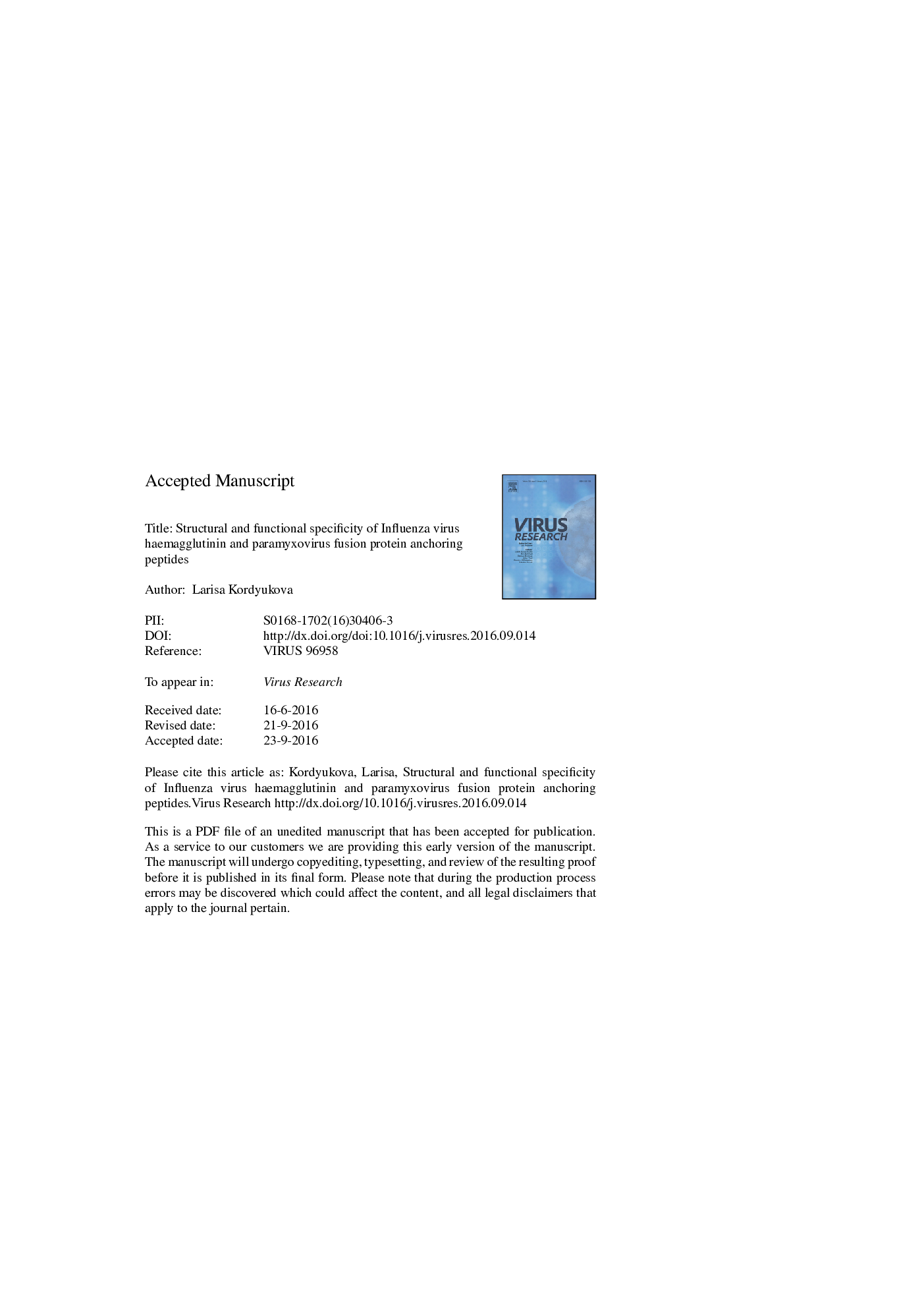| Article ID | Journal | Published Year | Pages | File Type |
|---|---|---|---|---|
| 5675492 | Virus Research | 2017 | 52 Pages |
Abstract
Two enveloped virus families, Orthomyxoviridae and Paramyxoviridae, comprise a large number of dangerous pathogens that enter the host cell via fusion of their envelope with a target cell membrane at acidic or neutral pH. The Class I prototypic glycoproteins responsible for this reaction are the Influenza virus haemagglutinin (HA) protein or paramyxovirus fusion (F) protein. X-ray crystallography and cryoelectron microscopy data are available for the HA and F ectodomains in pre- and post-fusion conformations, revealing similar spiky architectures, albeit with clear differences in the details. In contrast, their anchoring segments, which possess a linker region, transmembrane domain and cytoplasmic tail that is specifically modified with long fatty acids (highly conserved in HA and occasional in F), are not resolved. Recent experimental, bioinformatics and molecular modelling data showing the primary, secondary and quaternary organization of the HA and F anchoring segments are summarized in this review. Some amino acid patterns that are crucial for protein thermal stability or lipid membrane order/cholesterol binding are addressed, and new achievements in vaccine practice using HA transmembrane domain chimaeras are discussed. The oligomerization properties of the transmembrane domains are considered in the context of Group-1 and Group-2 antigenic HA subtypes and various genera/subfamilies of paramyxoviruses. A specific focus is the late steps of fusion that are reportedly facilitated by (1) β-sheet-promoting β-branched amino acids (valine and isoleucine) that are enriched in the transmembrane domain of paramyxovirus F or (2) a post-translational modification of C-terminal cysteines with palmitate/stearate (differential S-acylation) that is highly conserved in Influenza virus HA.
Related Topics
Life Sciences
Immunology and Microbiology
Virology
Authors
Larisa Kordyukova,
